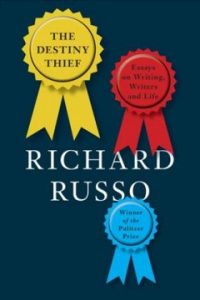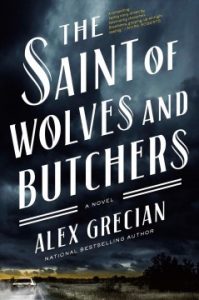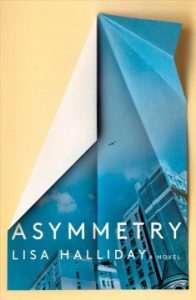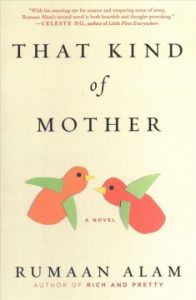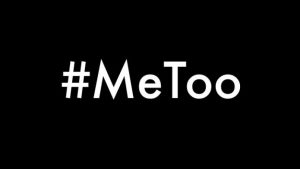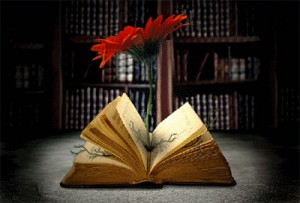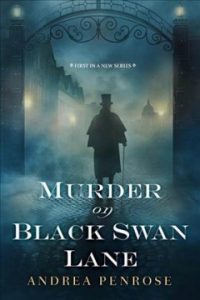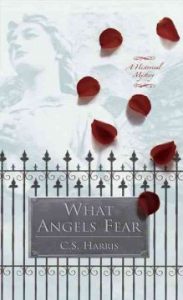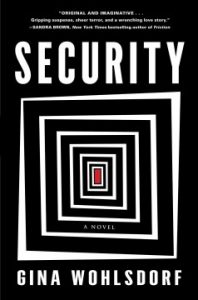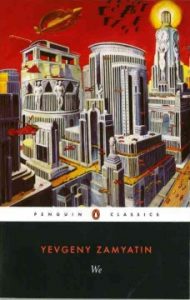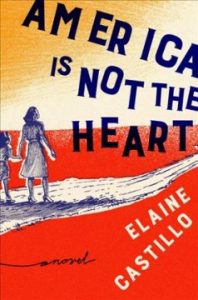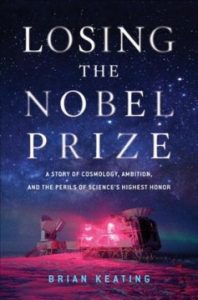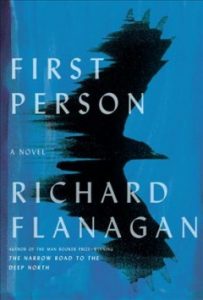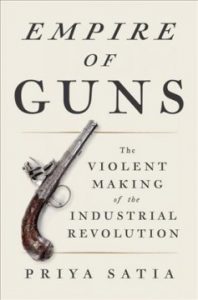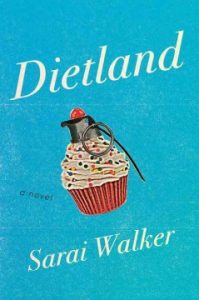In honor of the newest adaptation of Little Women airing on PBS this past weekend, we bring you this article from August 10, 2017 that discusses all the wonderfulness of Louisa May Alcott’s classic novel. Enjoy!
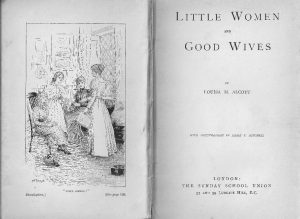
On Tuesday, Book Riot published a piece regarding my beloved (and your beloved, perhaps…?) Little Women, and the quirkiness of some editions. Now, I adore Book Riot; I love the way they talk about books, I love that they talk about Libraries; and I love that they encourage discussion about an enormous variety of books, genres, characters, adaptations. I have got some excellent recommendations from their site (and passed a number off to you, dear readers!). So it is from this place of love that I am discussing this piece.
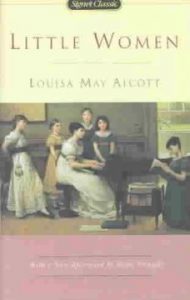 When it was first published, Little Women ended with Father coming home from the Civil War, and Beth recovering from scarlet fever. The book proved so overwhelmingly popular that Alcott’s publisher, Thomas Niles, suggested a sequel. That book was, in the US, published as the second part of Little Women; in Britain, however, it was published as a second book entirely, called Good Wives. The title choice was the publishers, not Alcott’s. As a result, there are some editions of Little Women, almost all of them British-based, that end with Father coming home from war. So, as Book Riot pointed out, there are some editions of the book where Beth doesn’t die. Sort of.
When it was first published, Little Women ended with Father coming home from the Civil War, and Beth recovering from scarlet fever. The book proved so overwhelmingly popular that Alcott’s publisher, Thomas Niles, suggested a sequel. That book was, in the US, published as the second part of Little Women; in Britain, however, it was published as a second book entirely, called Good Wives. The title choice was the publishers, not Alcott’s. As a result, there are some editions of Little Women, almost all of them British-based, that end with Father coming home from war. So, as Book Riot pointed out, there are some editions of the book where Beth doesn’t die. Sort of.
All of that is fine. And also good to know, because there is no “definitive” edition of Little Women. Some publishers put it out as two volumes, some distinguish between Part I and Part II in the text (say, with a title page, or something). It’s helpful to know what to expect from your books.
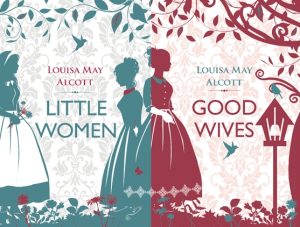
However, it’s what Book Riot had to say about the second half of Little Women that we are here to discuss today. They note, “This work, which Alcott never intended to have a sequel, ends with Beth contracting scarlet fever and recovering.“, and appreciate the fact that readers are allowed to imagine their own ‘happy endings’ for the March girls and their families. Good Wives, they claim “sort of exists as a Sliding Doors moment making fans wish it had all ended at the end of the original book”.
….Hold on there.
First of all, some historic clarification. No, Little Women was not specifically intended to have a sequel, but very little of Alcott’s work was written with any plan other than to make money. As a breadwinner of a family that had regularly known very real poverty, she wrote, admittedly, and unabashedly, for the paycheck. That she could turn out such meaningful and enduring work speaks a great deal to the real power of her writing talent. I worry that overlooking this aspect of her career, and using an “artist vs. capitalism” framework to disparage Part II (Good Wives).
 So let’s be clear: Little Women was written for a paycheck, as was Work, as was Hospital Sketches. So Niles’ request for a sequel wasn’t a command (he was a great friend to Alcott, and it’s not fair to paint him in a bad light, either), nor was the task onerous–except in the physical sense. Alcott wrote by hand, on blue-lined paper, in ink. Her rate of turnout, therefore, is absolutely remarkable: she began writing Little Women in the spring of 1868. It was published in October. She turned the completed manuscript of Part II (aka Good Wives) three months later. And also managed to write a number of letters revealing her writing process to us. And from those letters, I would argue that Part II (Good Wives) of Little Women was the book Louisa May Alcott wanted to write.
So let’s be clear: Little Women was written for a paycheck, as was Work, as was Hospital Sketches. So Niles’ request for a sequel wasn’t a command (he was a great friend to Alcott, and it’s not fair to paint him in a bad light, either), nor was the task onerous–except in the physical sense. Alcott wrote by hand, on blue-lined paper, in ink. Her rate of turnout, therefore, is absolutely remarkable: she began writing Little Women in the spring of 1868. It was published in October. She turned the completed manuscript of Part II (aka Good Wives) three months later. And also managed to write a number of letters revealing her writing process to us. And from those letters, I would argue that Part II (Good Wives) of Little Women was the book Louisa May Alcott wanted to write.
With her, and her family’s financial safety assured, Alcott had not only the funds, but the standing, to make some pretty bold choices. First and foremost for many, including Book Riot, is to have Jo marry someone other than Laurie. And that is a good thing. Because it is perhaps the first of many examples throughout the book where Alcott shows her readers, who were largely female, how to grow up. Little Women is full of ‘life lessons’ about the dangers of anger, about the power of forgiveness, about patience, and about pride. All of which are great…but are nonetheless fairly familiar in the course of 19th-century literature. What Part II does, and does so heartbreakingly well, is show us how messy, how painful, and how redemptive it can be to grow up, to put those childhood lessons to work in real life, and to know you’re not along doing it.
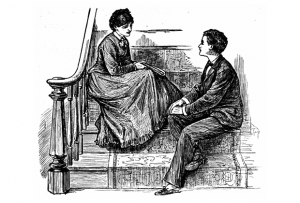 As Alcott wrote to one of her fans: “‘Jo’ should have remained a literary spinster but so many enthusiastic young ladies wrote to me clamorously demanding that she should marry Laurie, or somebody, that I didn’t dare refuse & out of perversity went and made a funny match for her. I expect vials of wrath to be poured out upon my head, but rather enjoy the prospect.” Look, Theodore Lawrence was my first love, and no one can ever, or will ever, hold a candle to him, and I will fight any who dare disparage him. But Louisa was making a point, as she does throughout Part II of Little Women: Life doesn’t turn out the way it does in books. People grow and change. On top of that, Alcott is adamant throughout this book that a woman’s life shouldn’t be defined by whom she marries (and that we should respect women’s decisions about their lives), which is why she marries a quirky, quiet, bookish guy who is happy to let her be precisely her. Laurie admits freely that he feels for Amy something he didn’t feel for Jo–because he (and Amy) grew up and made grown-up decisions. That’s not settling, as Book Riot claims. That’s teaching readers not to settle.
As Alcott wrote to one of her fans: “‘Jo’ should have remained a literary spinster but so many enthusiastic young ladies wrote to me clamorously demanding that she should marry Laurie, or somebody, that I didn’t dare refuse & out of perversity went and made a funny match for her. I expect vials of wrath to be poured out upon my head, but rather enjoy the prospect.” Look, Theodore Lawrence was my first love, and no one can ever, or will ever, hold a candle to him, and I will fight any who dare disparage him. But Louisa was making a point, as she does throughout Part II of Little Women: Life doesn’t turn out the way it does in books. People grow and change. On top of that, Alcott is adamant throughout this book that a woman’s life shouldn’t be defined by whom she marries (and that we should respect women’s decisions about their lives), which is why she marries a quirky, quiet, bookish guy who is happy to let her be precisely her. Laurie admits freely that he feels for Amy something he didn’t feel for Jo–because he (and Amy) grew up and made grown-up decisions. That’s not settling, as Book Riot claims. That’s teaching readers not to settle.
And also–how fantastic is it that Jo and Laurie remain friends for the rest of their lives? How many female/male platonic friendships endure so long, and remain so true, especially in literature? To overlook that part of their relationship isn’t fair, either.
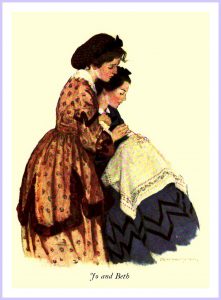 Part II of Little Women teaches us how inordinately cruel life can be. People die. Beth dies. No off-the-page where we can skip past it. She fades away before our eyes, just like Elizabeth Alcott, leaving a hole that would never be replaced. And that, too, is crucially important. In the 19th-century, people died elegantly and beautifully, looking like a saint. They lingered as ghosts to teach lessons. They are not, by and large, grieved in a realistic, human way. Part II of Little Women is one of the few novels I have encountered that show us the bitter injustices of death, and the work it takes to grieve. Does anyone want Beth to die? Of course not. But Alcott chose to share her loss with the world to help them bear their own sorrow. It’s not fun, and it’s not easy, and it’s not what “should” happen. But that’s the whole point.
Part II of Little Women teaches us how inordinately cruel life can be. People die. Beth dies. No off-the-page where we can skip past it. She fades away before our eyes, just like Elizabeth Alcott, leaving a hole that would never be replaced. And that, too, is crucially important. In the 19th-century, people died elegantly and beautifully, looking like a saint. They lingered as ghosts to teach lessons. They are not, by and large, grieved in a realistic, human way. Part II of Little Women is one of the few novels I have encountered that show us the bitter injustices of death, and the work it takes to grieve. Does anyone want Beth to die? Of course not. But Alcott chose to share her loss with the world to help them bear their own sorrow. It’s not fun, and it’s not easy, and it’s not what “should” happen. But that’s the whole point.
To claim that Part II of Little Women wasn’t “what Alcott intended” overlooks the very serious financial straights in which she was forced to work, the remarkable quantity and quality of work she managed to produce as a result. Saying that it’s not the book readers wanted discounts the very important messages that Alcott was sharing with the ‘little women’ who were reading her books. She wasn’t just helping them be good ‘girls’, but helping them grow up, which we still don’t do well in literature today. Is it fun? No. Do things turn out the way they should? No. But Part II tells us that we’re not alone when this stuff happens, and that is a phenomenal gift that needs to be acknowledged.




